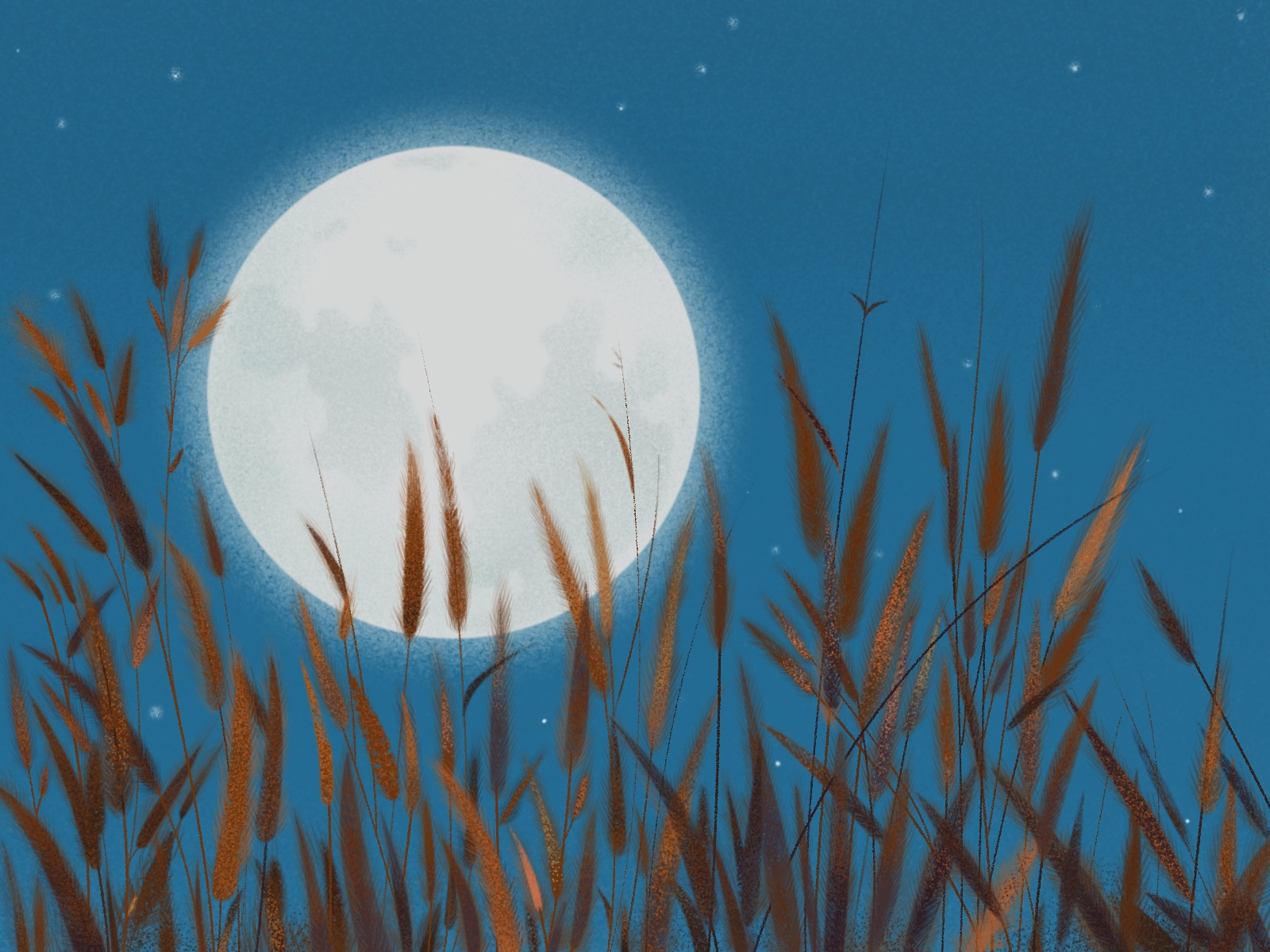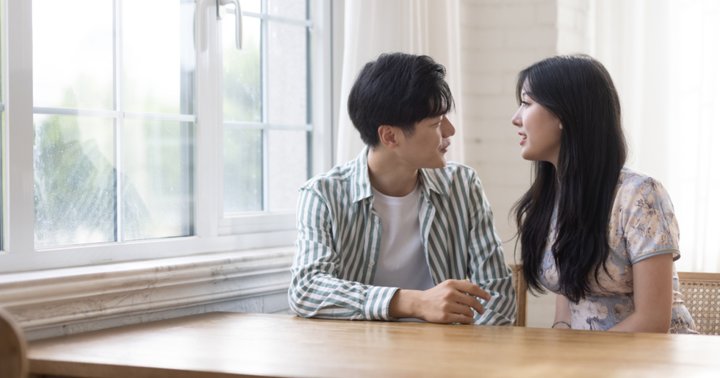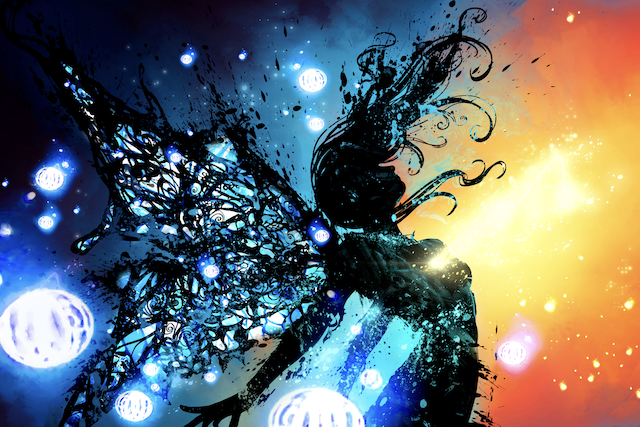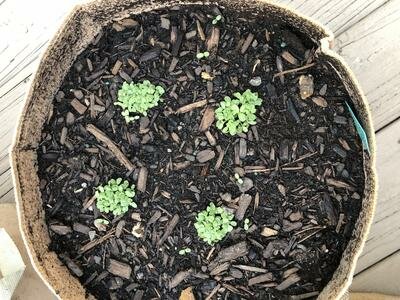Best of the Haiku Challenge (September 2024)
Announcing the winning poems from Tricycle’s monthly challenge The post Best of the Haiku Challenge (September 2024) first appeared on Tricycle: The Buddhist Review. The post Best of the Haiku Challenge (September 2024) appeared first on Tricycle: The Buddhist...

In his book Haiku World, William J. Higginson identifies the moon as one of the two most important seasonal themes in haiku poetry, the second being cherry blossoms. He writes:
The word ‘moon’ by itself will always be taken as the full moon of an autumn month, unless other material in the verse clearly indicates another season.
The reason is simple: The moon is generally brighter and bigger in the fall, making it a more noticeable feature of the night sky. Over the centuries, there has been a remarkable range in tone, style, and content on this theme. The winning and honorable mention poems for last month’s challenge continue to extend the range of this extraordinary symbol, exploring it from multiple points of view.
Margaret Stawowy finds a stoic witness in an autumn moon that “continues to rise above” all kinds of disasters, right from the beginning of time. Marcia Burton experiences a moment of quiet intimacy when a beam of moonlight touches her hands at the kitchen sink. David Bolton pulls into “a needed rest stop” on a long night drive where he and the moon “just sit.”Congratulations to all! To read additional poems of merit from recent months, visit our Tricycle Haiku Challenge group on Facebook.
You can submit a haiku for the current challenge here.
WINNER:
the same as always
the moon continues to rise
above disaster
— Margaret Stawowy
Last month’s winning poem shows that a haiku can be simple and still contain many layers of “surplus meaning.” The term comes from Basho, who felt that the images of a poem should reveal only a fraction of their content at first reading. The rest (the “surplus”) would come as readers pondered those images, letting them unfold in their imagination.
The scene could not be simpler: The full moon rises above the horizon on an autumn evening to reveal the aftermath of a disaster. We are not told the nature of that disaster, only that the moon rises above it, serene as always, removed from the damage and debris.
Given that the poem was composed during a hurricane season that has seen two massive storms make landfall in the southeastern United States, most people will read the poem in that light. Hurricane Helene hit the mountains of western North Carolina in September 2024 with catastrophic flooding that left more than one hundred people dead or missing. Parts of Florida and Georgia were heavily impacted as well.
The familiar shapes of roads and houses, trees and poles and power lines—these have all been disrupted. In the absence of artificial light, what outlines the eye can make sense of are all colorless. Here and there the moonlight glimmers off water that wasn’t there the day before.
The disaster doesn’t have to be a hurricane, of course. The poem would still work if it were a train wreck or an earthquake instead. The meaning lies in its phrasing.
In common parlance, “to rise above” something means to transcend it. We rise above misfortune after a loss and start over. We emerge from the rubble of a late-life divorce and invent ourselves anew. The pivot of the poem comes when we realize that it is the moon that is doing the transcending, rather than the thousands, or maybe millions, of individuals affected by the disaster.
The moon drifts through the heavens from epoch to epoch, unaffected by whatever drama happens to be unfolding on Earth. “Thus has it always been,” the poet seems to be saying. The moon that bears witness to the current disaster is the same moon that watched an asteroid incinerate the dinosaurs. The same moon that, some sixty-six million years later, presided over a much smaller conflagration in northwestern Turkey, as Troy burned to the ground.
In Buddhism, the moon is a symbol of enlightenment. In the West, it is associated with mutability. Aristotle believed that the heavens beyond the moon were an eternal region, not subject to disruption or decay, while the world below it was governed by constant change. The moon of our September 2024 winning haiku marks the boundary between those two realms. As such, it offers a profoundly ambiguous symbol. From night to night the moon changes, at times even vanishing for a night. But it is always there—forever remote, detached, and a bit indifferent to whatever is happening below.
HONORABLE MENTIONS:
hands in the water
the moon sends a beam of light
to the kitchen sink
— Marcia Burton
the moon and I pull
into a needed rest stop
where we both just sit
— David Bolton
♦
You can find more on September’s season word, as well as relevant haiku tips, in last month’s challenge below:
Fall season word: “(Autumn) Moon”
without a sternum
to hold these ribs together
i would be the moon
The goal of poetry is to contain the uncontainable—to convey meanings that cannot be expressed in any other way. The seventeen-syllable form is a trap for such meanings, but they get restless within the tight confines of that restrictive space. Like the emotions of the human heart, they long to be revealed. — Clark Strand
Submit as many haiku as you wish that include the autumn season word “moon.” Your poems must be written in three lines of 5, 7, and 5 syllables, respectively, and should focus on a single moment of time happening now.
Be straightforward in your description and try to limit your subject matter. Haiku are nearly always better when they don’t have too many ideas or images. So make your focus the season word* and try to stay close to that.
*REMEMBER: To qualify for the challenge, your haiku must be written in 5-7-5 syllables and include the word “moon.”
Haiku Tip: Celebrate the Moon!
The season word “moon” can be challenging to use in a haiku—a bit like being given a single piece of furniture and asked to arrange it meaningfully in an otherwise empty room. You could say all kinds of things about the moon in autumn, but if you said “autumn” that would be redundant. By long-standing tradition, the word “moon” in haiku, used in the absence of a modifier to indicate some other season, means that it is fall.
Here is a passage from the book I Wait for the Moon: 100 Haiku of Momoko Kuroda, translated by Abigail Friedman. I have adapted the poems to serve as models for haiku in English, but the prose commentaries are Friedman’s.
An ancient temple
right at the edge of the lake
I wait for the moon
Momoko wrote this haiku at Miidera temple, on the shore of Lake Biwa. It evokes the stillness of an evening, and the spiritual feeling of being at a temple on the shores of a quiet lake… Momoko is in dialogue with a host of spiritual guides, other haiku poets, and loved ones, some still on this earth, but many more not. Perhaps Momoko is alluding to Bashō, who composed a poem using the same season word, at the same temple, but the same lake, under the very same autumn moon:
Miidera Temple—
tempted to knock at the gate
under today’s moon
Bashō, too, is part of a web of allusion. In this case, his poem refers back to one by the Tang dynasty poet Jia Dao: “Birds rest in the trees by the pond / A monk knocks on the gate under the moon.”
Momoko is waiting for the same moon that illuminated the way for Bashō.
And so you have some models to work from in writing about the autumn moon. Just remember two things: (1) You are writing about the full moon rather than some other phase (quarter, half, new, etc.) and (2) the moon in question is the autumn moon rather than the moon of some other season.
A note on the moon: In his book The Haiku Seasons: Poetry of the Natural World, William J. Higginson wrote: “In autumn, especially at the full moon nearest the equinox, the moon rises at its lowest angle, staying close to the horizon for much longer than at other times of the year. Thus the autumnal moon shows off the well-known optical illusion of seeming larger near the horizon than when it is high in the sky. Admittedly, in Japan this also has to do with the weather, since autumn frequently brings clearer skies than summer, making the moon and stars much more visible than during the preceding months. But the clearest skies for moon-viewing seem to occur pretty universally in autumn. In life, as in [haiku], the essential nature of the moon is best displayed in autumn.”

 ShanonG
ShanonG 
































